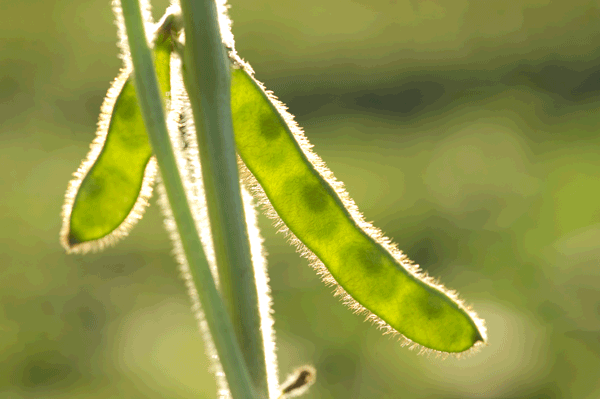Making good use of ESN
SITE SPECIFIC RESULTS
THE WHOLE IDEA behind Environmentally Stable Nitrogen (ESN), a polymer coated urea, was to slow down the release of nitrogen into soil and reduce the risk of environmental losses. But as it turns out, what is supposed to be good for the environment is not necessarily good for the crop.

Researchers have established that when it comes to yield production, ESN is not a one-size-fits-all solution. Under the right conditions, the technology does exactly what it is supposed to do; but in the wrong conditions, value gets left on the table. Dr. Ashraf Tubeileh, of the University of Guelph’s Kemptville Campus, concluded his third year of ESN trials on corn and wheat in 2013 and is hoping for some more conclusive results than the inconsistent ones he saw in 2011 and again in 2012.
“In 2011, we saw that having a blend of ESN and urea at 150 kilograms per hectare of nitrogen improved the yield a little bit,” he recalls. “In 2012, we didn’t see that much of a response because of the drought and basically ESN and urea were the same.”
WHEAT
Without conclusive evidence of a yield gain, it is hard for a farmer to justify the added investment on corn, particularly when cost per nitrogen unit is compared rather than on weight alone (since the polymer contributes to ESN’s weight but not it’s nutritional value). But for spring wheat, Tubeileh says it is really not worth applying ESN at all. “The only positive effect I could say on spring wheat was a slight increase in protein content in the grain,” says Tubeileh. “Sometimes, the 0.4 or 0.5 percent increase could be high enough to get the premium for protein content.”
Where corn is concerned, Tubeileh is more positive about the opportunity to fertilize in one pass per season rather than side-dress a nitrogen application after planting. He believes his numbers, once he has finished tabulating this year’s final results, will show that ESN does save on losses in wet conditions such as low areas in a field. “I think the future is probably with precision application and this is where you’d be really optimizing the use of ESN,” says Tubeileh.
CORN
Greg Stewart, Corn Specialist for the Ontario Ministry of Agriculture and Food and Ministry of Rural Affairs (OMAF and MRA), is more skeptical of the value ESN offers the average grower. Considering that the risk of nitrogen loss is at its greatest when it is in the nitrate form, under anaerobic conditions, he says the essence of trying to protect nitrogen through ESN is in delaying the accumulation of the nitrate pool until the crop is more vigorously consuming it. “No one’s going to go out and put ESN in the wet holes,” says Stewart, “but if you had a field where say 30 percent of it has a tendency to be wet (saturated or near saturated conditions) then having at least some portion of the applied nitrogen as ESN would be a reasonable play.”
More commonly however, many farmers are working soils which do not become so saturated, such as loams, sands, and well drained fields, and that means the odds of losing nitrogen are smaller. “So how could the ESN be an advantage to you if there isn’t a chance for the nitrogen to disappear somehow?” he asks. Stewart says that when he talks to growers about whether they should use ESN or not, he always starts by asking how heavy their soil is and if it is well drained. After a two-year trial in Woodstock produced no differences between ESN and urea use, he is confident that ESN offers little advantage to a farmer with a well structured, loam soil that has been systematically tiled and that very rarely is in a saturated state where denitrification can occur. On clay loams to heavy clays the odds of seeing nitrogen use improvements with ESN should improve.”
Stewart adds that there is a case for using ESN in certain other situations. In trials where he banded urea at high rates and “literally killed every seed in the length of the row,” Stewart says the very same amount of nitrogen as ESN did not cause any seed burn. “For growers wanting to run relatively high rates of banded starter (N plus K over 70 lbs/acre) using ESN can make the operation much more seed safe,” he says.
Along those same lines, Stewart says he usually gets called out at least once a year to a case where the salt injury from broadcasting urea and potash on sandy ground in the spring causes significant plant stand reduction. “If you had taken that urea and put a third or half of it down as ESN, you would essentially bring yourself away from a level that would cause any burn,” he says. “It is another tool in the toolbox especially for those growers on light textured soils.”
SOYBEANS
Horst Bohner, OMAF’s Soybean Specialist, says they also conducted trials from 2008 to 2010 to gauge if ESN was a good option on soybeans. Similarly, he says ESN made “absolutely no difference in 95 percent of cases,” but also admits that in cases of stress there was the odd, special case where ESN did improve soybean performance.
“On the soybean front, if your soil test is low, particularly for P and K, fertilizer provides extra yield,” says Bohner. “How you put it on does not matter.”
Since soil labs are reporting that they are seeing as many as 20 percent of soil sample submissions testing below critical values for K, he suspects growers have a lot more to gain by playing with other types of fertilizer on soybeans. Funding for Dr. Tubeeileh’s research was provided by Grain Farmers of Ontario. •







